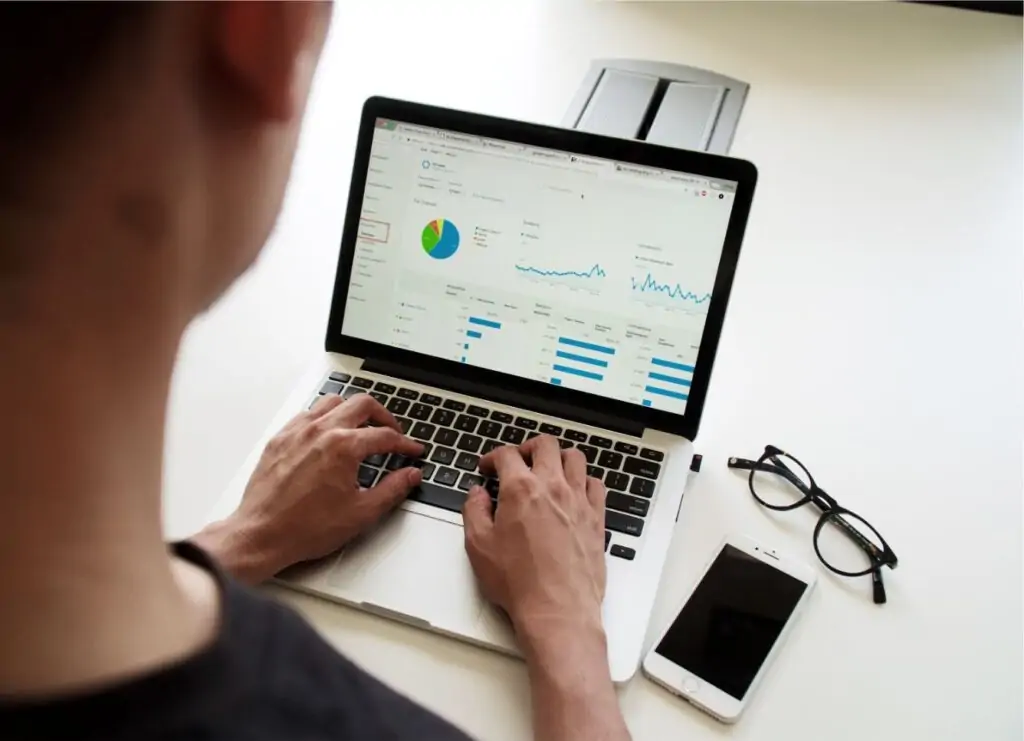Google’s 2024 Core Update and its New Spam Policies
SEO

There are two things in the digital world that can make or break an online business: content and links. If you have a business with a website that already attracts users, you probably know about the content side of things.
After all, that is what helps customers to find your website, to engage with it and to eventually make a purchase, sign up for a newsletter or support your cause (or whatever else you want them to do). But what about those links? How many backlinks does your website have? And more importantly: How many of those links are legit and well-deserved? This is where link building becomes relevant.
Whilst the content on your website is entirely in your own hands, the link building depends on many external factors that you cannot always influence, or can you? In the early days of the internet and SEO, you could simply pay somebody to link to your website. But the rules have changed, and paid link building is not only losing its impact but can also lead to search engine penalties and destroy all SEO efforts you have made over the years. Therefore, that is not a viable option. So, what is? The answer is simple: digital PR and backlink campaigns!
Before you get on the job though, it is important to understand what makes a successful backlink campaign and how to create one. Let us break this down into the steps that lead to links:
Before you can run any campaign, not just in digital PR, you need an idea. What will it be about? For any content you create that is meant to get people to talk about it – and link to it – there are a few things to keep in mind when you bounce off ideas:
Some examples might make this easier to understand.
A highly time-sensitive topic, but also highly relevant for a wide audience is this interactive map by tripsguard. The map and a detailed list were launched in June 2020 and tell you which countries you can travel to. It is something the world has been waiting for and therefore gained a lot of attention.
But there are some downsides as this campaign will only be relevant for a short period of time and it will require constant updates as the information can change anytime. The creators also took a risk because creating such a campaign takes some time and the topic is of such relevancy that others might have thought of it too. Chances are that somebody else is working on something similar that launches a day before you launch.
A campaign about dog-friendly holidays was published on tails.com and is the perfect example for a campaign that allows multiple outreach angles. The obvious are pet-friendly and holiday related websites that might be interested in the data and the supporting information. By adding an ordered list of UK cities, it makes the campaign relevant for local press, tourism boards or tourist attractions in those locations. The results of this successful backlink campaign are summarized in this case study about tails.com.
The bathroom brand Victorian Plumbing launched a DIY related campaign at the end of March 2020, just a few days after the UK went into lockdown. The original idea was following a different approach that suddenly was no longer suitable given the circumstances. A reactive PR approach had to be taken. Luckily, the creators were flexible and found ways to present the data in a more suitable way. You can read more about this in the related case study.
With the lockdown in mind, the whole topic of DIY works also became highly relevant at that time, but it remains a timeless topic. Over the past few months, people had more time for it, but they will always need to unblock drains or assemble furniture. This campaign has a very long life-cycle and will keep on attracting links.
Once you know what your campaign will be about, the next step is to collect the data that will make the content for your campaign. How you get this data entirely depends on the topic of your campaign. Sometimes, you will have the data available in your business intelligence, other times it will require in-depth research or even market surveys. How complex this process might be, should not be a reason for you to not pursue a specific topic for your campaign, but you should be honest about the work it requires. This might be the point to get an expert involved, such as a researcher or a digital PR agency.
Now that you have your data ready, what are you going to do with it? When you were discussing the idea in the first step, you might have had something in mind. When looking at the data, is that sill suitable? Does the type of content you are going to create resonate with your audience and with the journalists you want to reach out to?
There are plenty of content types, some of them are more suitable in each situation than others. If your data is numbers heavy, you might want to visualize it in an infographic that summarizes your main findings.
If your data has scientific character and if that would resonate with your audience, you might want to think about a white paper.
If your topic is complex and explaining your data requires detailed information and imagery, maybe a video is a good idea.
Just to name a few other types of content you could create: podcasts, videos, images, memes, infographics – static and interactive -, virtual reality content, quizzes, blog post, personality tests, interviews, eBooks, webinars etc.

Photo by Lukas on Pexels
It mostly depends on the data you have and who you are trying to reach, but you should keep in mind that some of these content assets require a lot of work. For an infographic, you most likely need a designer, for a video you might need a videographer, for a white page you would want an academic writer, virtual reality or interactive pieces might even require programming skills. You might want to try some free tools to create it yourself, but you want quality above all else. Publishing a poorly made campaign can damage your brand and it will not get you the attention you want. If you have these specialists in your team that is great, if not, maybe check what a digital PR agency can do for you.
Now that you have amazing content published on your website, you need to tell the world about it – and not just anybody, but you want to reach journalists, bloggers, webmasters that could pick it up, reference your content and link back to your website. How do you find those contacts? And more importantly, how do you get their contact details?
Most PRs are building their relationships on Twitter, but that takes time and it does not mean that there will be a suitable contact for any type of campaign in an existing network. You might have the contact of the politics editor at a national newspaper, but that will not get you far if your content is about sports.
Alternatively, you can research the internet for websites that have published similar content but finding the contact details is a different story. There are tools such as Roxhill, Gorkana or Cision that have extensive databases for any topic, but these tools require a certain budget.
Apart from that, you mostly need to budget for time because outreach is a full-time job and journalists will not wait three days for you to reply to their follow up questions. Keep that in mind when you start outreaching.

Photo by Campaign Creators on Unsplash
If you got all the previous steps right, you probably have some really good backlinks now pointing to your campaign, your rankings have increased and your website is getting more traffic, or not? Would you even have data ready to support these statements? If not, it is time to get it because it is hard to speak of a successful campaign if you are not monitoring the results.
Instead of just looking at the number of links you received, you should also look at the websites that these links are coming from. Are those the websites you wanted to get attention from? Are they authoritative and trustworthy? Do they mention your brand in the right way? Do they get any traffic?
You also want to look at the impact it had on your own website rankings and traffic. If there was no significant movement in any of these areas, look at your overall campaign again and at the responses you received. You might find ways to improve it or learn a thing or two for your next campaign.
You are familiar now with the steps to a successful backlink campaign, you understand what it takes and where things can get complicated because it is not a one-size-fits-all approach and it takes expertise in multiple areas to get it right. If you feel confident that you and your team can handle it easily, you are incredibly lucky. If there are certain steps of the process you are in doubt about, that is okay. Most website owners feel that way and that’s why digital PR agencies exist. Please get in touch to find out how JBH can support your business.